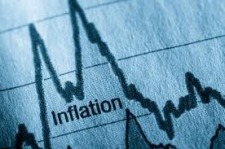Independent Wealth Management
Who scrutinizes your investments, designs and tests your retirement and education plan, searches for new investment ideas, patrols insurance agents and mortgage brokers, shows you strategies designed to reduce your investment costs and income taxes, monitors your 401(k), promptly responds to your email, provides one monthly statement, day-to-day net performance across all of your accounts and does all of your paperwork...We do!
Are your investment returns real?
 Amidst the more obvious lingering effects of a sluggish economy, such as slow job growth, decreasing incomes, low interest rates and shaky consumer confidence, there lurks a more insidious threat which has largely been ignored. Inflation or the prospect of its resurgence has somehow remained under the radar; perhaps because the official measure, the Consumer Price Index (CPI), is still below historical averages, or perhaps because the government has done such a good job in convincing the public that inflation is not a real threat at the moment.
Amidst the more obvious lingering effects of a sluggish economy, such as slow job growth, decreasing incomes, low interest rates and shaky consumer confidence, there lurks a more insidious threat which has largely been ignored. Inflation or the prospect of its resurgence has somehow remained under the radar; perhaps because the official measure, the Consumer Price Index (CPI), is still below historical averages, or perhaps because the government has done such a good job in convincing the public that inflation is not a real threat at the moment.
While declining paychecks and near-zero growth savings accounts are the tangible results of the current economic and fiscal environment, inflation is the ever-present hidden tax. In real terms this creates a critical perception gap between what people see as their “nominal” income, that which they can see in their checking and savings accounts, and their “real” income they can actually use to buy gas, groceries and insurance.
Graham and Doddsville

For many years, a popular investing theory has held that the stock market is efficient. In other words, a stock’s price reflects everything that is known about a company, from how the economy is affecting it to how its management is doing. As a result, according to this “efficient market” theory, there can be no overvalued or undervalued stocks. Investors who beat the market year after year are simply lucky, like monkeys flipping coins for bananas.
In his speech—which commemorated the fiftieth anniversary of Security Analysis, a treatise on value investing written by Benjamin Graham and David Dodd—Buffett challenged the efficient market theory by pointing out that a small group of investors have beaten the odds and achieved consistent success in the stock market What did those investors do differently? They all came from the same place...
Incremental Return on Capital
 Although many investors are familiar and comfortable with traditional valuation parameters such as earnings per share (EPS) and return on equity (ROE), these tools may only provide a partially accurate picture of a company’s value. Investors may want to familiarize themselves with another measurement called “incremental return on capital.”
Although many investors are familiar and comfortable with traditional valuation parameters such as earnings per share (EPS) and return on equity (ROE), these tools may only provide a partially accurate picture of a company’s value. Investors may want to familiarize themselves with another measurement called “incremental return on capital.”
Incremental return on capital is a rather interesting figure. Distillation of its meaning essentially leaves you with this definition; a method to assess the return on capital earned on new investments or new dollars. It is a forward leaning analysis of what will likely to occur, based on what has most recently occurred. In many ways this figure is an assumption, a type of financial inertia put in motion by...
Rational Market Expectations
 Noted investor Warren Buffett rarely predicts the future direction of the stock market. He prefers to focus commentary on his trademark investing style, the analysis of corporate valuations. But in 1999, in a series of speeches, Mr. Buffett did cross the prediction threshold—and in the process, provided investing insight that is as relative today as it was 10 years ago. Mr. Buffett reviewed the historical performance of the Dow Jones Industrial Average for the 34-year period that preceded his speech, breaking it into two 17-year segments. His perennial advice? Govern your market expectations carefully.
Noted investor Warren Buffett rarely predicts the future direction of the stock market. He prefers to focus commentary on his trademark investing style, the analysis of corporate valuations. But in 1999, in a series of speeches, Mr. Buffett did cross the prediction threshold—and in the process, provided investing insight that is as relative today as it was 10 years ago. Mr. Buffett reviewed the historical performance of the Dow Jones Industrial Average for the 34-year period that preceded his speech, breaking it into two 17-year segments. His perennial advice? Govern your market expectations carefully.
Segment 1: 1964–1981
During the first 17-year segment, from the end of 1964 through the end of 1981, the Dow Jones Industrial Average (“DJIA”) rose by only 0.88 points, from 874.12 to 875. It wasn’t because...



